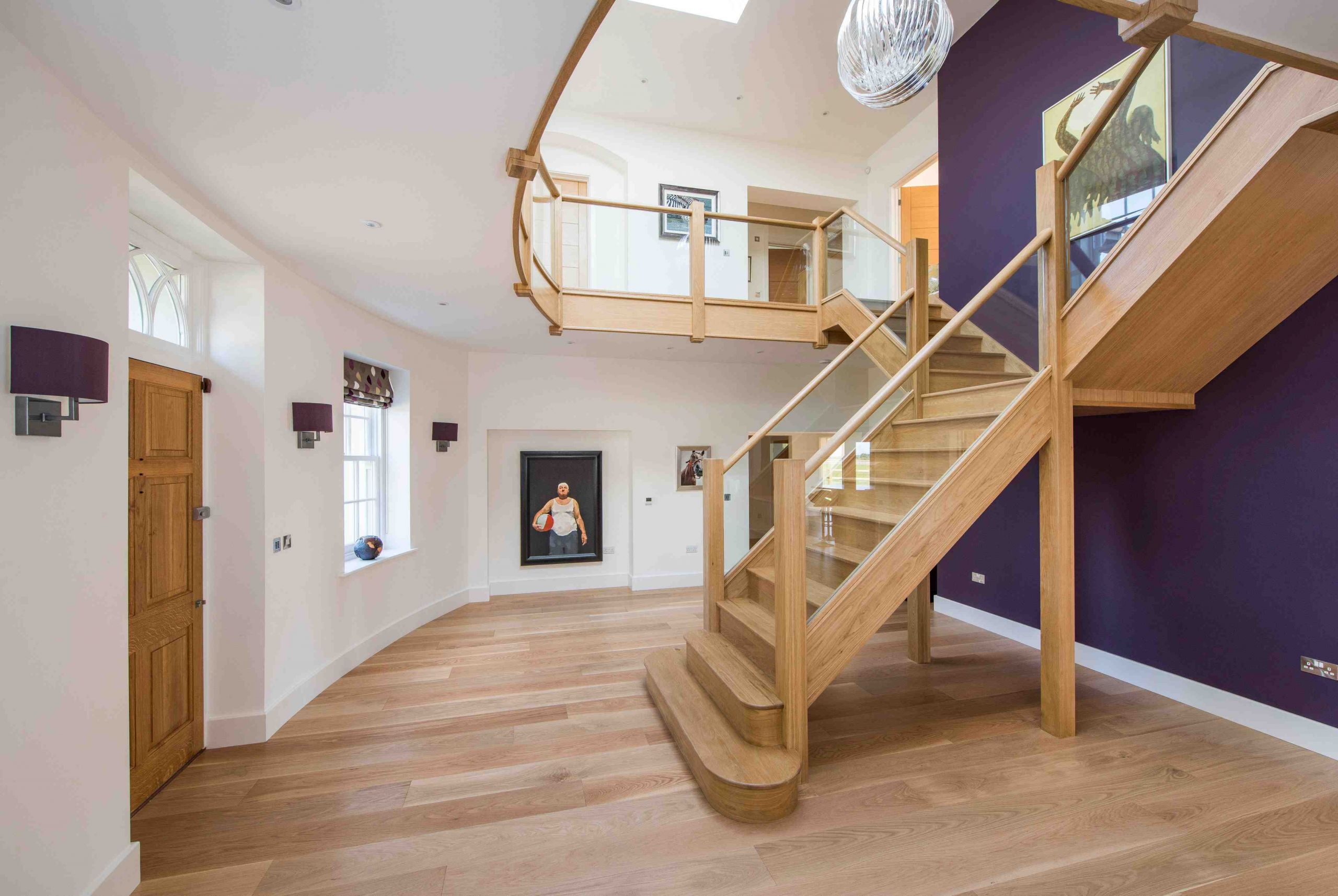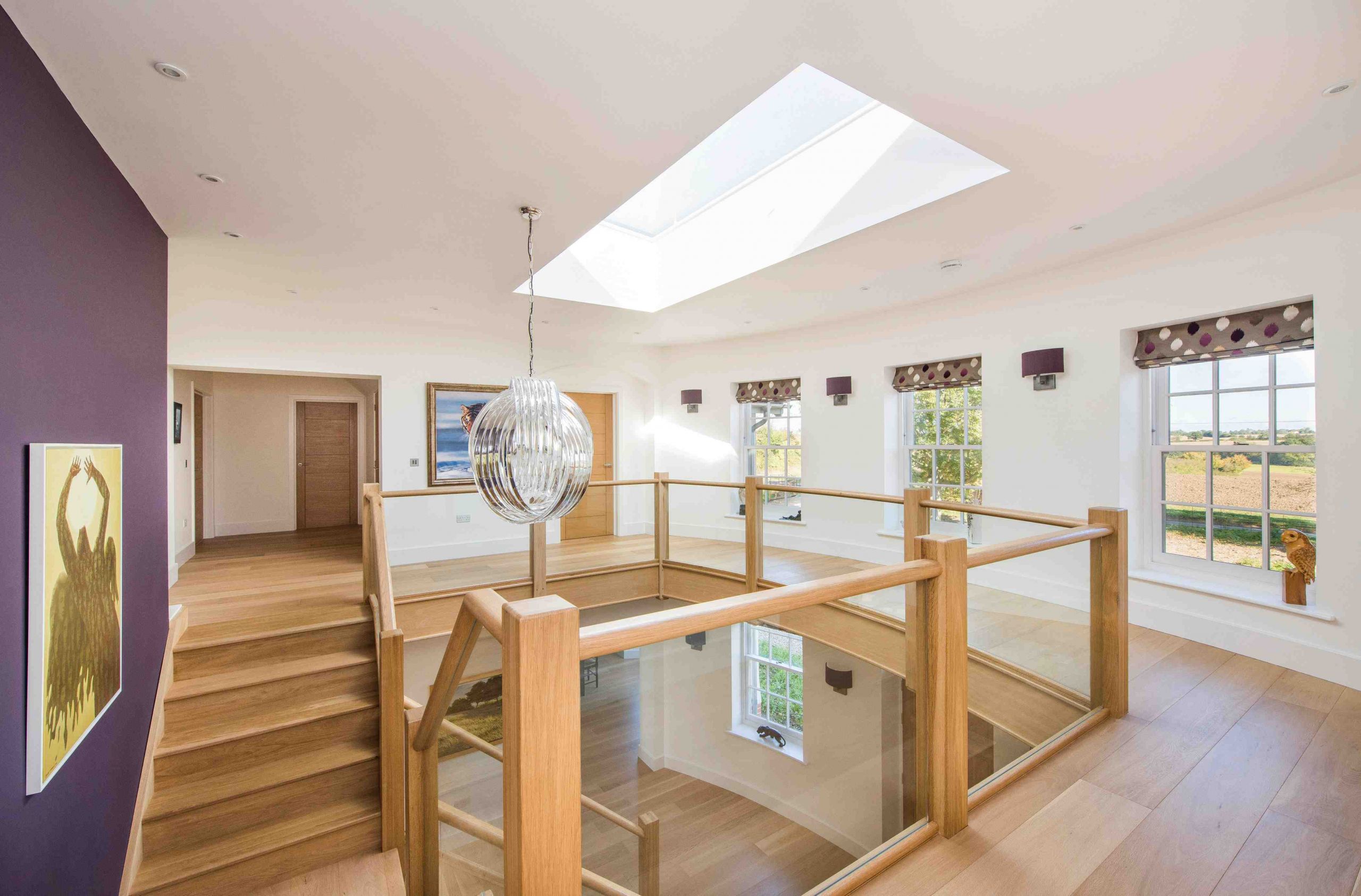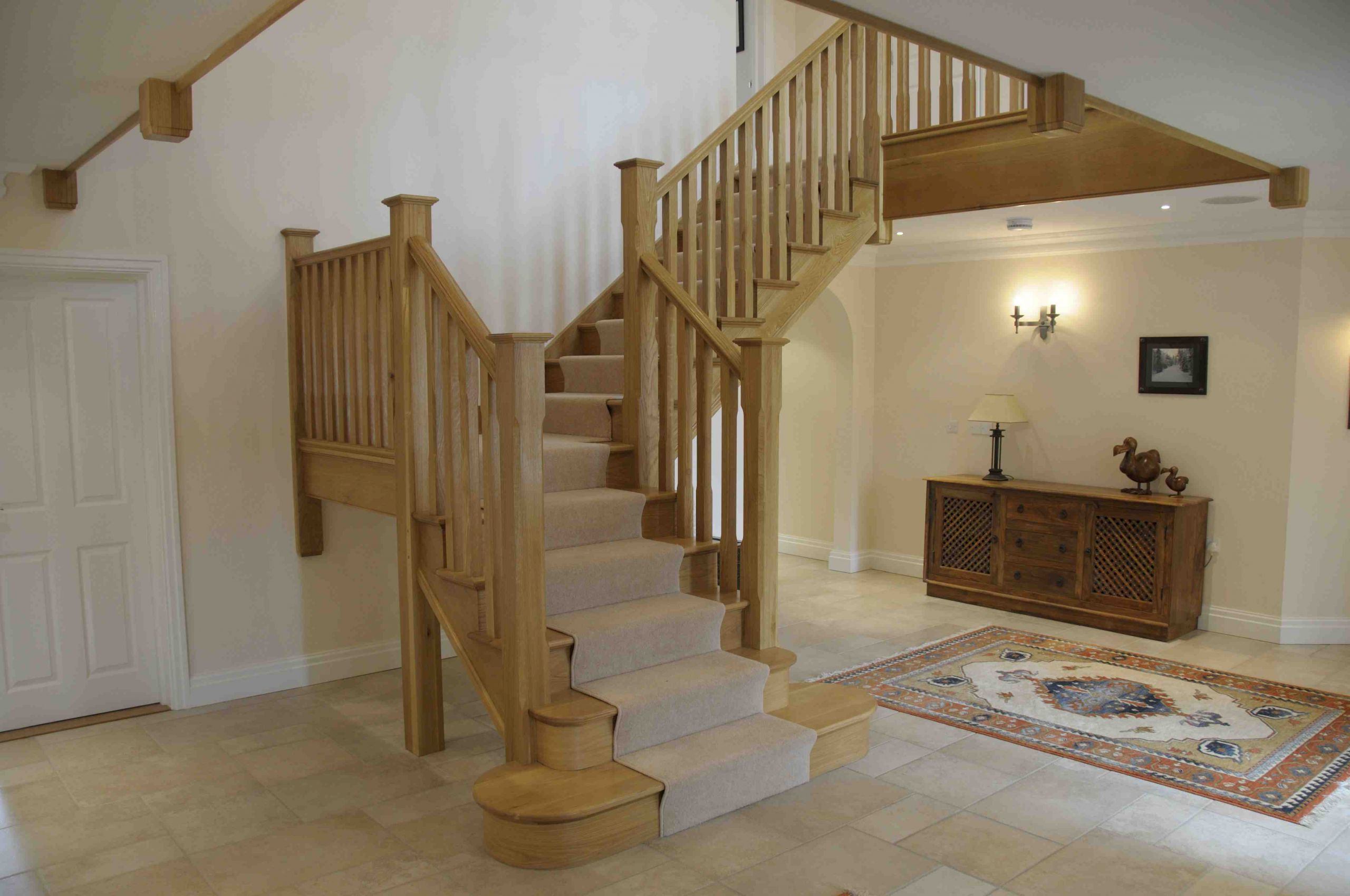Glossary of Terms
This glossary of staircase-related terminology is by no means exhaustive, but it does detail the most common and basic terms used in staircase construction and balustrading installation.
There are currently 52 names in this directory
Baluster
Turned, carved or otherwise vertical sections placed between the handrail and the stair tread or string. Also known as spindles.
Balustrade
The collective name for the complete assembly of handrails, baserails, newels, spindles, infill and newel caps.
Bullnose Step
Sits at the bottom of the stairs with one or both ends of the step having a quarter circle design.
Closed String
A string with the face housed/trenched to accommodate treads and risers, so their profile cannot be seen.
Continuous Handrail
Using straight lengths of handrail connected to handrail fittings and ramps, the handrail flows over the tops of newel turnings creating a continuous run of handrail.
Curtail Step
A decorative-shaped step at the bottom of the stairs usually accommodating the volute and volute newel turning of the Continuous Handrail System.
Cut String
A string with the upper edge cut away to the shape of the treads and risers so that their profile can be seen from the side.
Floor to Floor Height
The total rise of a staircase, measured from the top of the finished lower floor to the top of the finished upper floor.
Flutes
Decorative vertical grooves sometimes routed into the wood surface of spindles or newel posts.
Glue Blocks
Blocks of wood attached to the underside of the stair at the junction of the riser and tread. These secure the risers and treads together and are used to prevent movement and so minimise squeaks.
Going
the going of a flight of stairs is the horizontal distance between the face of the first and last risers. The individual going of a step is measured from face of riser to face of riser and for domestic use should be a minimum of 220mm.
Gooseneck
A handrail fitting consisting of an up-ramp, and a vertical turn. It is used at a landing or balcony to raise the rake handrail to the height of the balcony handrail.
Gradient of a staircase
The ratio between the going (horizontal) and the rise (vertical); the angle of inclination.
Handrail
A protective rail designed to prevent people or objects from falling into an open stairwell. A moulded rail following the pitch, or rake of the staircase – also forms the top/upper edge of the balustrading.
Headroom
The vertical distance from the lowest point of the ceiling above the stair to the tread nosing. This is relevant to comply with current Building Regulations. A Headroom of 2m is required at all points on and off a staircase and as you pass down a staircase.
Infill Strips
A thin wooden strip that fills the grooved space between spindles in both the baserail and underside of the handrail.
(Sometimes call fillet).
Landing
A resting place, or wide step anywhere within the staircase or top of a flight of stairs. Landings are often used to change the direction of a stair. This is an item associated with but not supplied with the staircase.
Open Risers
A staircase designed with only the horizontal surfaces of the treads fixed to the stair strings. The vertical space between treads is open but limited to less than 100mm by a timer half-riser.
Rail System/Railings
The balustrade. Used to describe a complete rail system consisting of the handrail, spindles and baserail.
Rise
The rise of a flight is the vertical distance between the floors or landings connected by the flight. The individual rise is the vertical measurement from the top of the tread to the top of the tread.
Riser
The board that forms the face of the step. The maximum individual rise for domestic flights is 220mm.
Run
The horizontal distance covered by the entire staircase. Technically it's the distance from the trimmer face to the front of the first steps nosing
Spindles
Turned, carved or otherwise vertical sections placed between the handrail and the stair tread or string. Also known as balusters.
Stair Direction
Either right or left hand. Determined by the turn a staircase makes when facing it from the bottom.
Staircase
The entire structure relating to a stair, comprising steps, treads, risers, strings, balustrading, landings, etc.
Top Nosing
narrow tread nosing situated above the top riser or along the upper edge of a balcony. This gives the appearance of a tread at the top of the staircase.
Trimmer Joists
These are used to construct a well suitable for the opening of the staircase. These are held together with screws or joist hangers. This is an item associated with but not supplied with the staircase.
Up Easing or Up-Ramp
A handrail fitting that joins two handrails or fittings at different angles in a graceful, pleasing manner.
Wall Rail
A handrail that is mounted onto a wall and supported by wall brackets rather than newels or balusters.
Wedges
Tapered pieces of wood, coated in glue and used to hold treads and risers tightly into a routed string.
Well Opening
The opening on the upper floor (lower floor ceiling) for placement of a staircase. From Trimmer to Trimmer
Winder Tread
Tread with a greater run on one side than the other. Used on helical or winder staircases.



Customer
You are a great little company and similar organisations could learn a big lesson from the way you do things.
Customer
It was such a pleasure dealing with your company
Customer
I asked if it could be delivered in a couple of weeks and immediately I was given a date which was adhered to (a rarity these days)
Customer
The stairs obviously fitted perfectly and exceeded our expectations with regards to quality and finish especially considering they were so reasonably priced.
Customer
Thank you so much for what can only be described as a first class service from start to finish.

